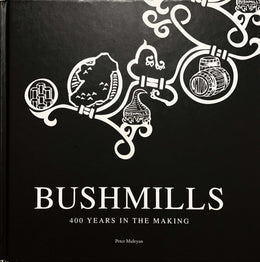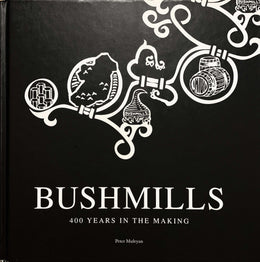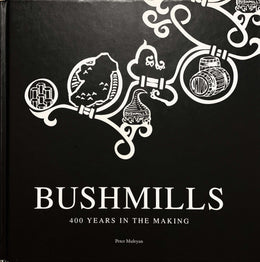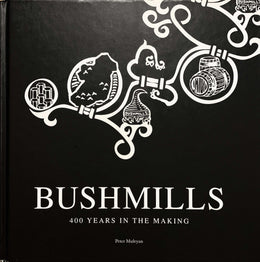
The coopers' yard, early 1900s
Eleven years after Alfred Barnard's pilgrimage around the United Kingdom, the Scotch whisky 'bubble' burst. In 1898 the Scottish blending firm of Pattison's went spectacularly bust.
Brothers Robert and Walter Pattison had a stable of three main whiskies, two Scotch and an Irish blend, the 'Dew of Slievemore', but they had been trading fraudulently, buying their own stock at inflated prices and funding the whole venture on credit. Pattison's bankruptcy sent shock waves through the industry. Irish and Scottish warehouses were awash with whiskey, most of it column-still grain, which was now worth a fraction of what it had been a year earlier. Banks called in loans and blenders and distillers went to the wall.
The age of steam had passed and as Victorian boom gave way to Edwardian recession, Great Britain found itself blinking in the harsh electric light of the 20th century. Britain's dominance of world trade was being challenged by Germany and the United States, while the Boer War in South Africa and 'the Irish problem' were the first cracks in the collapse of the British Empire. The world order was changing.
Ireland and its distilleries would soon be swamped by events outside their control. It would be a huge fall from grace. Within a generation the country's only native industry, which produced one of the most successful and popular drinks on Earth, would be in tatters.

Of course no one at the time could have anticipated the changes that would convulse Ireland. So a couple of pamphlets issued at the start of the 20th century offer a fascinating insight into an industry shaken by the Pattison scandal, but totally unaware of the many tragedies that would soon unfold.
In 1902, to coincide with the Glasgow International Exhibition, the Department of Agriculture and Technical Instruction for Ireland published a booklet that the editor hoped, "may serve as a useful book of reference, which, if it does not always fully satisfy intelligent curiosity, will at least stimulate thought".
At the time whiskey making in Ireland was at its peak. In 1901,30distilleriesproduced14,221,520 gallons of whiskey, not too far off the all-time record set the previous year. "The distilleries in Ulster," states the document's author, "differ from those in most other parts of Ireland in two respects. They are mostly of comparatively modern establishments... and the patent stills are used." In other words the giant distilleries in Belfast were state of the art grain facilities and unlike those in Dublin and Cork, did not operate pot stills. "Then there is Bushmills," the pamphlet continues, "already mentioned as famous for being the most ancient in Ireland; it and the Coleraine Distillery...are remarkable as being the only all malt distilleries in Ireland."
The quality of whiskey from Old Bushmills was singled out for special mention, as was the claim that "the Bushmills Distillery is said to be the oldest in Ireland". It is perhaps not surprising that in 1904, when the distillery issued its own pamphlet for the World's Fair, (which it noted with pride was "profusely illustrated") it was very specific about the type of whiskey made here.
"The distillation of whiskey in the old fashioned Pot Still is a simple process as compared with the more modern but less esteemed patent still which latter issimply a producer of Alcohol or Silent Spirit, and that is not whiskey."
The distillery bottling hall, early 1900s
In other words, in the days before the Royal Commission's decision on the nature of whiskey, Old Bushmills was letting the public know that their whiskey was a quality product. It was this focus on quality rather than quantity that in the long run was to pay dividends, as blow after blow rained down on the Irish whiskey industry.
The ruling of the Royal Commission, which allowed silent spirit to be sold as whiskey, hit the Irish hard, but there was worse to come. In 1909 David Lloyd George, the Chancellor of the Exchequer, brought his famous 'People's Budget' before Parliament. This radical budget introduced huge social reforms that Prime Minister Asquith hoped would "lift the shadow of the workhouse from the homes of the poor". The Old Age Pensions Act was to follow and it would be paid for by, among other things, a 33% tax hike on whiskey.
In 1914 the World tumbled into war and in order to preserve grain for food, whiskey making slowed to a stop. Limavady distillery in Co. Derry closed forever and with whiskey production now stalled, existing stocks became more and more valuable. The end of the Great War brought huge social change and a less tolerant attitude to alcohol.
On 5th August 1920 the Old Bushmills Company Ltd was wound up, and while we can't be certain as to the exact reasons, the actions of the liquidator certainly aroused the suspicions of the Revenue Commissioners, who were after a windfall tax. Instead of disposing of all the company's whiskey stocks at once, over a period of two and a half years the liquidator sold batches of this now rare and expensive whiskey. The proceeds were then divided up among shareholders and creditors. The Inspector of Taxes suspected this was not tax avoidance, which is legal —this was tax evasion, which is not. They felt the company was trading, and they wanted their tax on the profits of whiskey sold up to April 1921. This case went as far as the House of Lords and in the end the Revenue lost. By 1923 the distillery was back on the market and up for sale in a very different Ireland.
 The distillery bottling hall, early1900s
The distillery bottling hall, early1900s
 Bushmills wooden wash backs (fermentation vessels), early 1900s
Bushmills wooden wash backs (fermentation vessels), early 1900s
 The old bridge over the River Bush and water mills, early 1900s
The old bridge over the River Bush and water mills, early 1900s
 The distillery in the early 1900s. The twin pagoda roots are conspicuous by their absence. On the left, St Columb’s Rill flows towards the dam, past the ‘modern’ multi-storey warehouse no 2
The distillery in the early 1900s. The twin pagoda roots are conspicuous by their absence. On the left, St Columb’s Rill flows towards the dam, past the ‘modern’ multi-storey warehouse no 2

The distillery's malting floors and kilns, with their remarkable pagoda roofs, were a relatively late addition to Bushmills. designed by Victorian distillery architect Charles C. Doig in 1910. They accommodated Allied Forces servicemen stationed in Bushmills during the War and even produced malted barley for Guinness. On-site malting was abandoned inthe early 1970s and they now host the visitors’ café and shop.

An illustration showing the newly installed pagoda roofed malting floors and kilns
Written by Peter Mulryan
The text is an excerpt from "Bushmills: 400 Years in the Making" (pp. 53 - 66), written by Peter Mulryan, published 2008 by Appletree Press Ltd.







